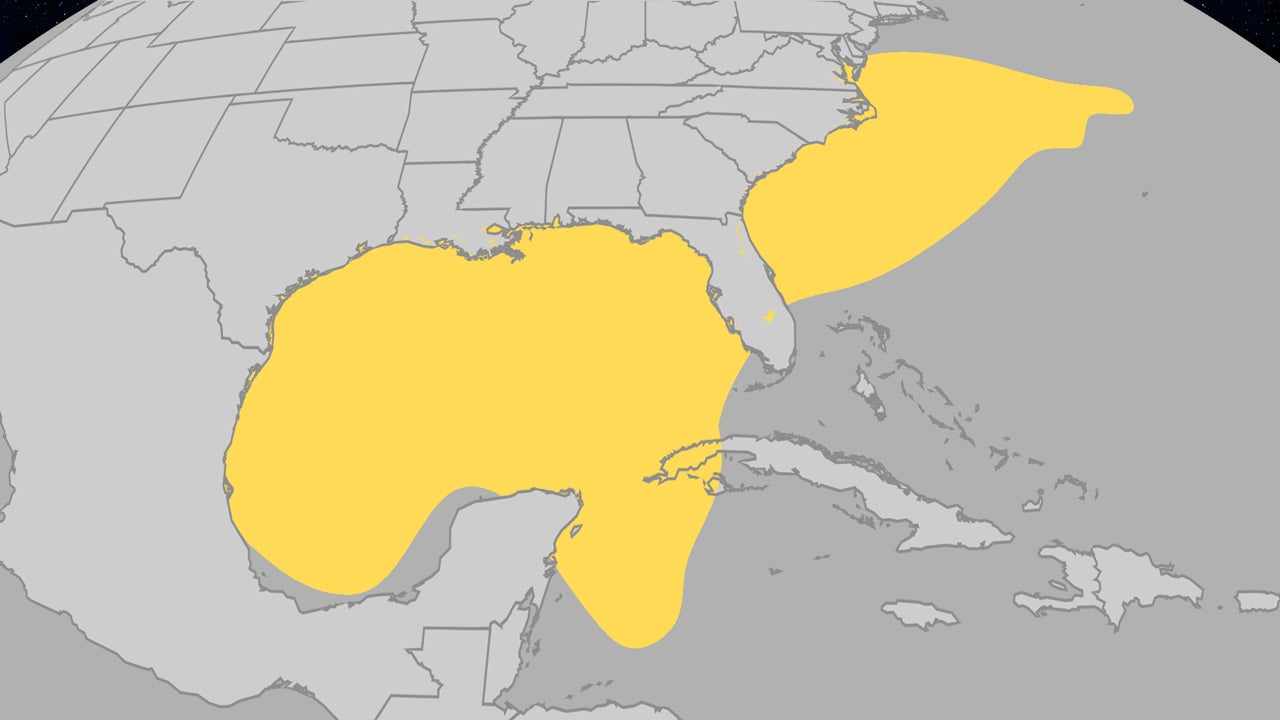Understanding The June Atlantic Hurricane Season: Formation And Trends

Welcome to your ultimate source for breaking news, trending updates, and in-depth stories from around the world. Whether it's politics, technology, entertainment, sports, or lifestyle, we bring you real-time updates that keep you informed and ahead of the curve.
Our team works tirelessly to ensure you never miss a moment. From the latest developments in global events to the most talked-about topics on social media, our news platform is designed to deliver accurate and timely information, all in one place.
Stay in the know and join thousands of readers who trust us for reliable, up-to-date content. Explore our expertly curated articles and dive deeper into the stories that matter to you. Visit Best Website now and be part of the conversation. Don't miss out on the headlines that shape our world!
Table of Contents
Understanding the June Atlantic Hurricane Season: Formation and Trends
The Atlantic hurricane season officially runs from June 1st to November 30th, but the increasingly erratic nature of these powerful storms means understanding the nuances of the season, particularly its earlier months, is crucial. While August and September traditionally see the most hurricanes, June storms are becoming more frequent and potent, demanding our attention and preparedness. This article delves into the formation of Atlantic hurricanes in June and explores recent trends.
The Formation of June Hurricanes: A Complex Dance of Nature
June hurricanes, while less common than their late-summer counterparts, are far from anomalies. Their formation relies on a confluence of atmospheric and oceanic conditions:
- Warm Ocean Water: Hurricanes are fueled by warm ocean water, typically above 80°F (27°C). Even in June, parts of the Atlantic can reach these temperatures, providing the necessary energy.
- Atmospheric Instability: A volatile atmosphere, characterized by high humidity and rising air, is essential. This creates the instability needed for thunderstorm development.
- Low Wind Shear: Strong vertical wind shear tears apart developing storms. Lower wind shear allows thunderstorms to organize and strengthen into tropical cyclones.
- Pre-existing Disturbances: Often, a hurricane begins as a tropical wave, a westward-moving trough of low pressure that originates in Africa. These waves provide the initial structure for storm development.
Recent Trends: A Shift in the Atlantic Hurricane Season?
Recent years have shown a concerning upward trend in the number and intensity of early-season hurricanes, including those forming in June. Several factors may contribute to this:
- Climate Change: Rising global temperatures are warming ocean waters, expanding the areas and durations where hurricane formation is possible. This is particularly significant in extending the season earlier into June.
- Sea Surface Temperatures (SSTs): Anomalies in SSTs, particularly unusually warm patches in the Atlantic, can significantly impact hurricane formation and intensification.
- El Niño/La Niña: These climate patterns influence atmospheric conditions in the Atlantic. While their impact on June hurricanes is less predictable than on later-season storms, they still play a role.
Preparing for June Hurricanes: Proactive Measures are Key
The increasing likelihood of June hurricanes necessitates heightened preparedness:
- Monitor Forecasts: Stay informed about weather forecasts from reputable sources like the National Hurricane Center (NHC) [link to NHC website].
- Develop a Hurricane Plan: This should include evacuation routes, emergency supplies, and communication strategies. Don't wait until a storm is imminent!
- Strengthen Your Home: Ensure your home is structurally sound and prepared for high winds and potential flooding. This includes trimming trees and securing loose objects.
- Invest in Insurance: Adequate homeowners and flood insurance are crucial to protect your property and assets.
Conclusion: A Call for Vigilance
While June hurricanes remain less frequent than those in the peak months, the evidence suggests an upward trend. Understanding the formation process and the contributing factors – especially the impact of climate change – is crucial for improving preparedness and mitigating the devastating consequences of these powerful storms. Staying informed and taking proactive measures are essential for protecting yourself, your family, and your community. Don't underestimate the power of early-season hurricanes – be prepared!

Thank you for visiting our website, your trusted source for the latest updates and in-depth coverage on Understanding The June Atlantic Hurricane Season: Formation And Trends. We're committed to keeping you informed with timely and accurate information to meet your curiosity and needs.
If you have any questions, suggestions, or feedback, we'd love to hear from you. Your insights are valuable to us and help us improve to serve you better. Feel free to reach out through our contact page.
Don't forget to bookmark our website and check back regularly for the latest headlines and trending topics. See you next time, and thank you for being part of our growing community!
Featured Posts
-
 Pacers Lead Evaporates Knicks Resurgence Secures Game 3 Win
May 27, 2025
Pacers Lead Evaporates Knicks Resurgence Secures Game 3 Win
May 27, 2025 -
 These Nfl Teams Are On The Bubble 2023 Playoff Contenders Most Likely To Qualify
May 27, 2025
These Nfl Teams Are On The Bubble 2023 Playoff Contenders Most Likely To Qualify
May 27, 2025 -
 Wnba Officiating Scrutiny After Fevers Close Defeat To Liberty Featuring Caitlin Clark
May 27, 2025
Wnba Officiating Scrutiny After Fevers Close Defeat To Liberty Featuring Caitlin Clark
May 27, 2025 -
 Live Updates Raducanu Battles Wang Xinyu At Roland Garros
May 27, 2025
Live Updates Raducanu Battles Wang Xinyu At Roland Garros
May 27, 2025 -
 Pacers Collapse Knicks Incredible Rally Secures Game 3 Win
May 27, 2025
Pacers Collapse Knicks Incredible Rally Secures Game 3 Win
May 27, 2025
Latest Posts
-
 Brasileiro Henrique Rocha Choca O Mundo Com Vitoria Em Sua Estreia Em Grand Slam
May 30, 2025
Brasileiro Henrique Rocha Choca O Mundo Com Vitoria Em Sua Estreia Em Grand Slam
May 30, 2025 -
 Pioli Ritorna In Serie A Il Benvenuto Dell Ex
May 30, 2025
Pioli Ritorna In Serie A Il Benvenuto Dell Ex
May 30, 2025 -
 La Influencer Angela Marmol Conquista Tik Tok Con Su Impactante Nuevo Video
May 30, 2025
La Influencer Angela Marmol Conquista Tik Tok Con Su Impactante Nuevo Video
May 30, 2025 -
 Wednesday May 28 Nyt Connections Complete Guide To Answers
May 30, 2025
Wednesday May 28 Nyt Connections Complete Guide To Answers
May 30, 2025 -
 6 Abc Memorial Day Special Spotlighting Upper Dublins Youth
May 30, 2025
6 Abc Memorial Day Special Spotlighting Upper Dublins Youth
May 30, 2025
